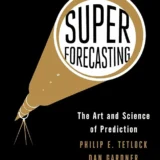 “I’ll take that challenge. It’s a dead hand against a living will.”
“I’ll take that challenge. It’s a dead hand against a living will.”
There is a curious glamour in certain soldiers and generals who might enjoy more approval if they hadn’t fought on the wrong side (i.e. the one that lost). In real life, figures such as Erwin Rommel and Robert E. Lee enthral us even though they fought for evil; in fiction, where the dead are nothing more than words on a page, we have Grand Admiral Thrawn and Loki of Asgard. These fictional characters, and many more, owe their existence to Foundation and Empire, which introduced two very different conquerors to face the Foundation: General Bel Riose of the Galactic Empire and the enigmatic, mind-manipulating Mule.
Foundation and Empire comes in two parts (outline). The General, originally entitled The Dead Hand, pitted the rising Foundation against the declining Galactic Empire and, in line with the earlier books, laid the seeds for the next Seldon Crisis. The Mule pitted the Foundation against the Mule. The two stories are reflections of each other: Bel Riose operates within the confines of the plan and is defeated by it, the Mule breaks the plan and shatters it; military force is useless in the first story, but the key to the second; the detour to Trantor appears pointless in the first, but the salvation of some hope in the second. In a sense, the first story ends with Seldon’s dead hand serving as a deus ex machina; in the second, the deus ex machina no longer exists and the results are disastrous.
This is, in a sense, the logical development of the previous stories. Both Foundation and The General put predestination over free will, on the assumption that options would narrow to the point where only one option – perhaps something as simple as doing nothing – was available. The Foundation seems to win by default and there’s only so much you can do with that setting before the Foundation becomes a Mary Sue. The Mule, however, asks what happens when an outside context foe enters the scene. The Mule exists outside the Seldon Plan and therefore cannot be anticipated, let alone prepared for.
The contrast is quite striking. Asimov’s reasoning, in The General, is that Bel Riose’s success makes him a threat to the Emperor and thus he is recalled and executed before he can defeat the Foundation for good. It seems a neat little framework, although – going by my knowledge of history – it requires more than a little luck (or mentalists pulling the strings). On the other hand, the Mule can influence and convert key leaders on the other side … creating alliances that could not have happened in the original history. (Imagine Hitler allying with Britain prior to WW2.) Indeed, Asimov is cunning enough to point out that events were building towards an entirely different kind of crisis – outright civil war – before the Mule intervenes. He literally disrupts the cycle of problem-solution-new problem that dominates the earlier stories as well as everything else.
This contrast continues in how the two enemies are portrayed. Bel Riose is a classic military leader, seen through his subordinates as a heroic space operatic general. He’s the kind of character that we can root for, even though we know he’s on the wrong side (and surrounded by greedy schemers and ultimately removed by a paranoid emperor). On the other hand, the Mule is a shadowy presence for most of his book and only reveals himself at the end; his servants, however, are incredibly (and unnaturally) loyal.
Asimov’s grasp on his characters has grown stronger, although – by modern standards – it is still quite limited. This limits the story, in some ways; The General has no room for free will and individual action, beyond a handful of tiny snapshots. What actions the characters do take is pointless, judging by the ending. In some ways, it leaves you rooting for the one person who does take action – Bel Riose himself, who seems to drop out of the story midway through, only to have his execution mentioned in passing at the end of the story. In others, it frustrates me to see how many characters simply drop out of the foreground and never return. The Mule, on the other hand, keeps most of its focus on Bayta Darell. She is, in a sense, Asimov’s first true heroine.
In a thematic sense, she’s a fascinating choice. Bayta is presented to us, at first, as a simple newlywed honeymooning on the Mule’s homeworld. (Her husband has been asked to keep his eyes open for any clues as to how the Mule took power so quickly.) She’s no Red Lensman. She seems a simple observer, watching as she is dragged into the growing war against the Mule, then becomes a refugee as Terminus falls to an outside threat and flees to Trantor … where she realises the truth and, in the fullest exercise of free will, puts her life on the line to save the galaxy. In one sense, she’s an insignificant person; in another, she’s the key to everything. It is a refutation of the earlier books.
Asimov has clearly also improved his skill at creating a mood. There isn’t that much of a sense of tension in The General, but The Mule starts out lightly – with a honeymooning couple – and starts to rapidly slide into darkness. The certainty that Seldon planned everything is shattered, leaving the characters lost and alone. By the time the characters rush towards the final confrontation, the mood is dark and the best they can do is save a single tiny hope for the future. Asimov was doing it long before Revenge of the Sith. Subverting expectations rarely works, but here it works brilliantly.
He also continues to develop the Foundation, before the advent of the Mule throws the Seldon Plan into the dustbin. The merchant princes of the earlier stories have become the power behind the throne in The General, then evolved into a dictatorial monarchy when one of the princes mounted a de facto coup. Asimov points out the weaknesses in this form of rule, in both the short and long term. He notes that the first monarch was both brilliant and brutal, the second merely brutal and the third neither. The man who inherited his power had no idea how to use it, rendering him unfit to lead the Foundation in war even before the Mule arrived. The planned Seldon Crisis is easy to see coming. Indeed, the problems facing the monarchical mayor are very like the ones facing the emperor in The General. It is only the Mule who throws history for a loop, something Asimov uses slight-of-hand to hide until it is too late. The Foundation’s dependence upon Seldon, and their belief they don’t have to do anything to save themselves, is what kills them in the end. Ironically, they have become as trapped as the university professors of the first book. And by the time Bayta breaks out of that mindset, it is too late.
Overall, Foundation and Empire is a more satisfactory read than Foundation. It presents the Foundation with a challenge from a past that cements it’s position, then knocks everything out of kilter – subverting the whole series. All of a sudden, nothing can be taken for granted any longer …
… Which is, IMHO, the reason why Foundation and Empire remains my favourite of the first set of books.
***
Read the other reviews in this series –
Introduction
Foundation
Foundation and Empire








